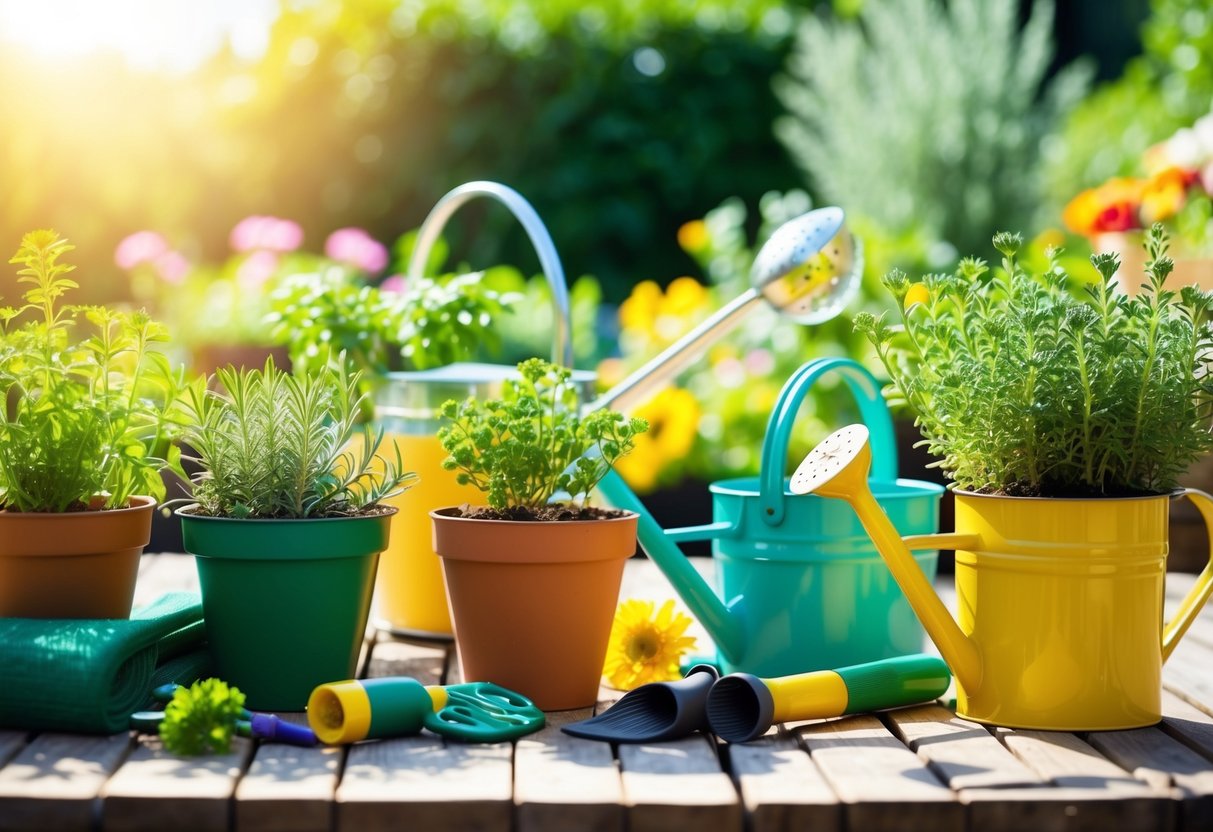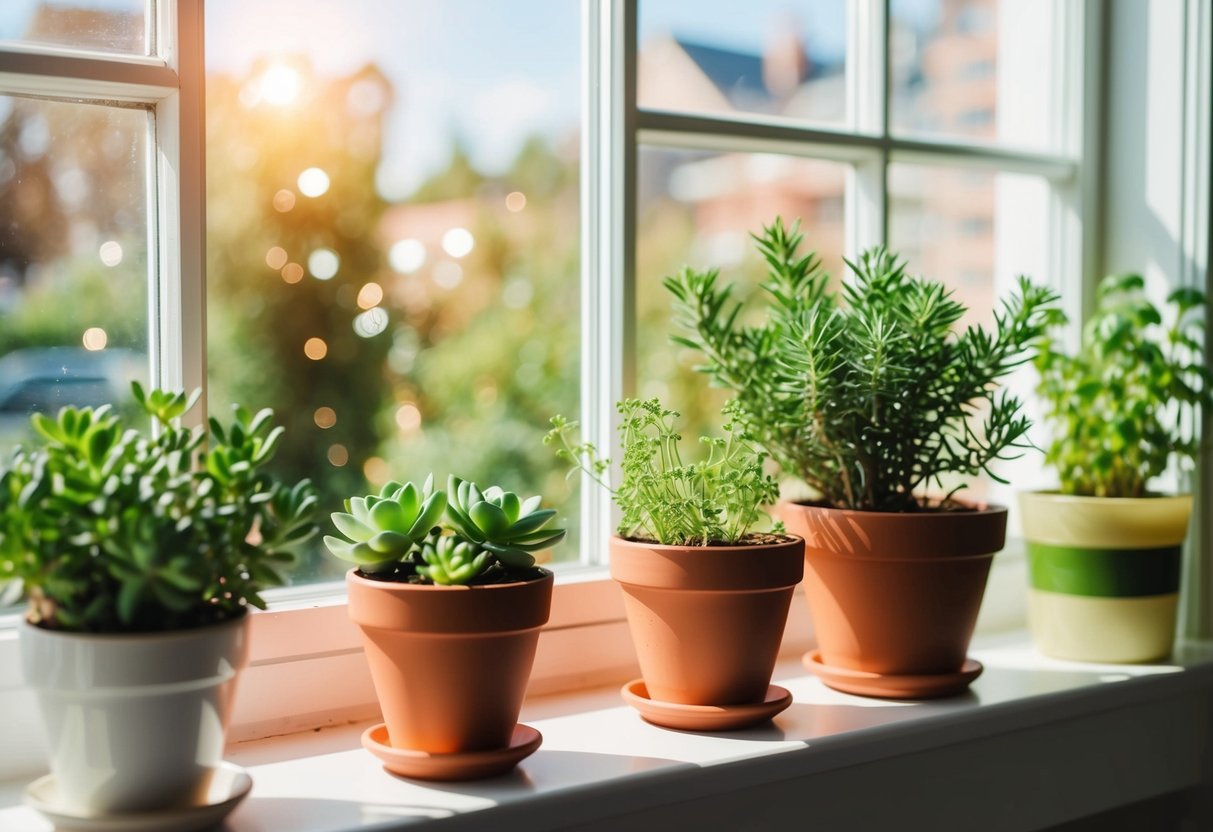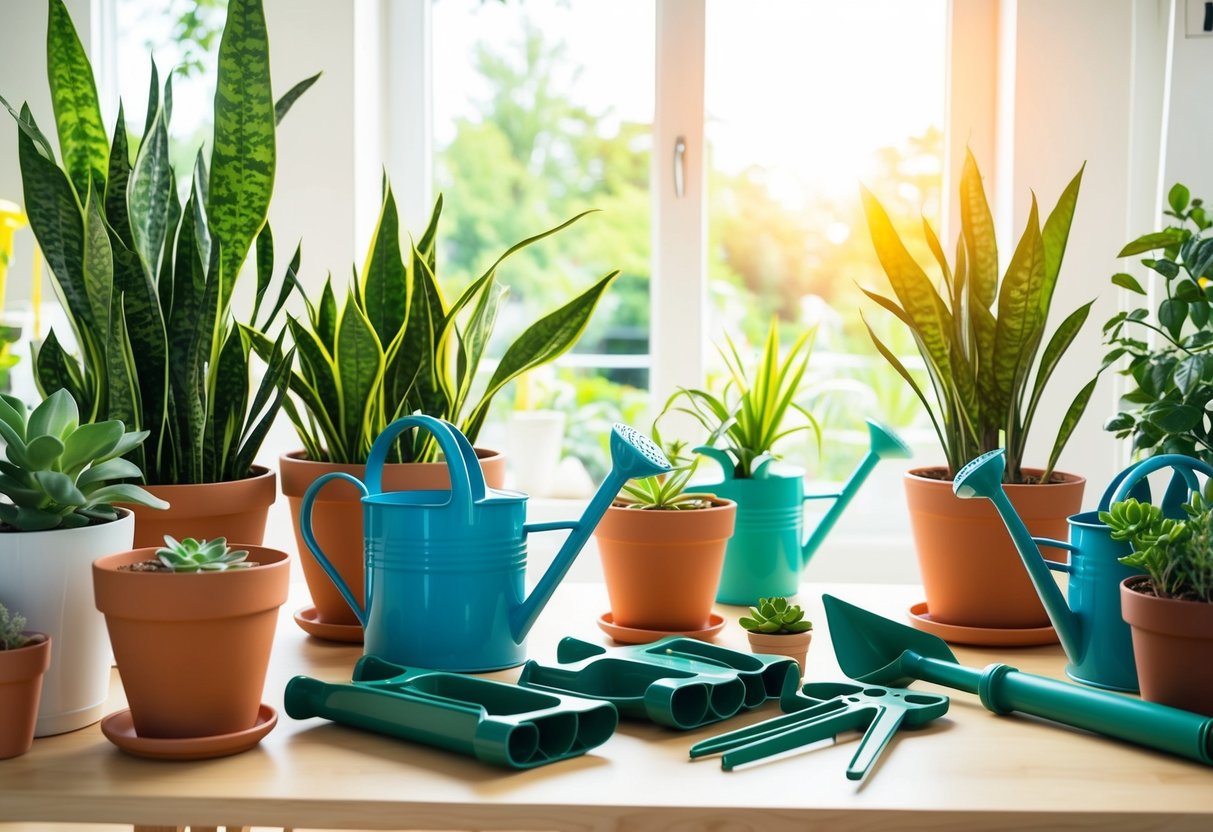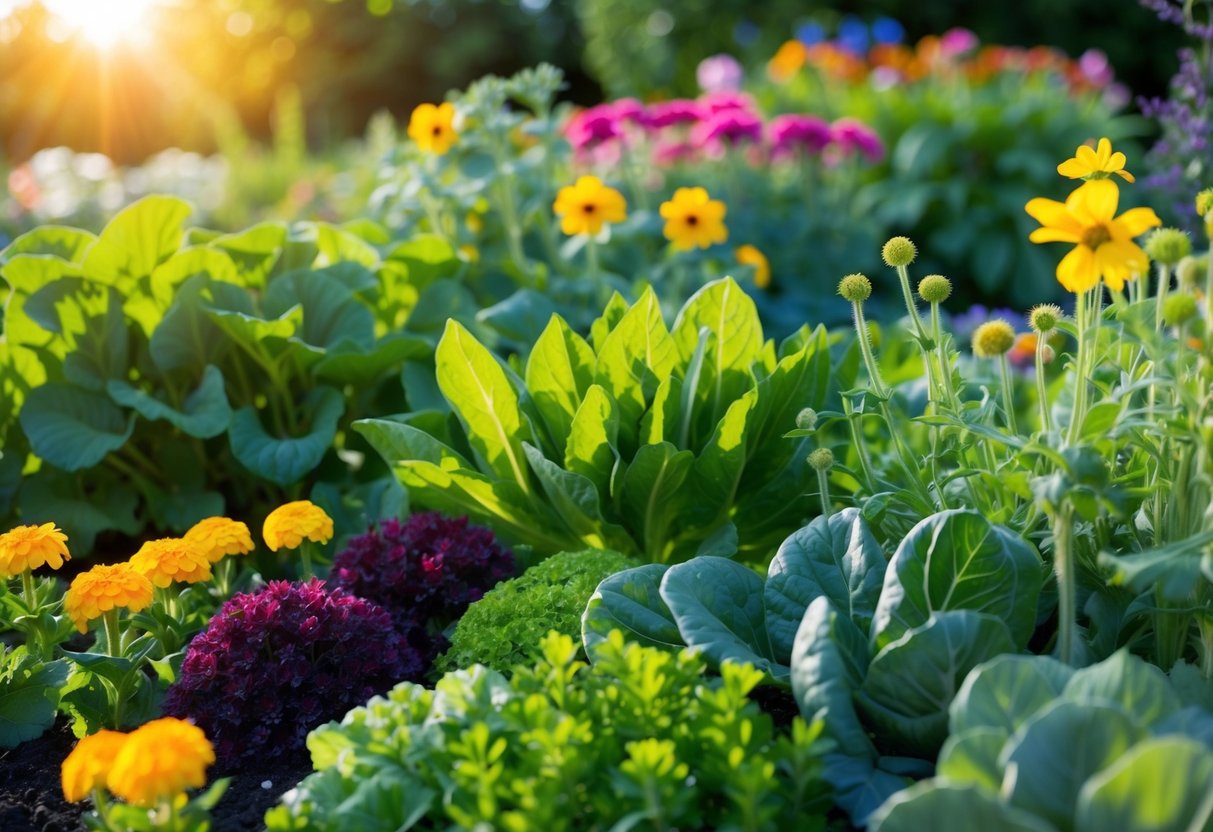What Plants Should I Grow as a Beginner? Easy Choices for Starters
Starting a garden can feel overwhelming, but choosing the right plants can make it a rewarding experience. When you’re just getting your hands dirty, certain plants are perfect for beginners. Lettuce is an excellent choice due to its fast-growing nature and low maintenance needs; it thrives in both garden beds and containers, making it versatile.

Another great option is growing potatoes indoors at room temperature first, then transplanting them outside. They require an inch of water weekly and are ready to harvest by midsummer. For something a bit different, you might try the heirloom assortment of potatoes, which offers unique flavors and hardy varieties.
If you’re interested in adding a splash of color and fragrance, consider easy-to-care plants like the Mexican orange blossom. This flowering shrub is not only beautiful but also fragrant, bringing a touch of beauty to your space. With these plants, your gardening journey can be simple and enjoyable.
Getting Started with Gardening Basics

Starting your own garden can feel overwhelming, but with a little know-how, it can be a fun and rewarding adventure. Begin by understanding your climate, preparing your soil, planning your garden layout, and choosing the right containers or raised beds. These basics will set you on the path to a thriving garden.
Understanding Your Climate
When starting a garden, knowing your climate is crucial. Your local climate influences what plants will thrive. Identify your hardiness zone to know which plants can survive your area’s average minimum temperature.
Reading up on your local weather patterns helps in deciding planting times. Some plants need a lot of sun, while others do better in cooler temperatures. Pay attention to your area’s frost dates too, as they determine when to plant and harvest.
Soil Preparation
The foundation of any successful garden is good soil. Vegetables and flowers need well-drained soil, rich in nutrients. Test your soil to check for pH and nutrient levels.
Add compost or organic matter to improve soil conditions. This helps retain moisture and adds essential nutrients. Ensure the soil isn’t too compact. Loose soil lets roots grow freely and absorb nutrients easily.
Garden Layout and Design
Plan your garden layout before you start planting. Think about the space each plant needs to reach its full size. Tall plants should be located so they don’t shade shorter plants.
Consider creating raised beds for better soil drainage and easier access. Raised garden beds warm up faster in spring and are great for growing plants in various climates.
Choosing Containers and Raised Beds
If you have limited space or poor soil conditions, containers and raised beds are excellent options. Use containers with good drainage holes to prevent waterlogging. Containers come in various sizes to fit your needs.
Raised garden beds are versatile and can be filled with the right soil mix. They are ideal for small spaces and can help manage different soil issues, giving you more control over your garden environment.
Selecting Beginner-Friendly Plants

As a beginner gardener, choosing the right plants can make all the difference. Start with plants that are easy to grow and require minimal maintenance. This ensures you can enjoy the rewarding experience of gardening without feeling overwhelmed.
Easy Vegetables and Herbs
Vegetables and herbs are a great way to begin gardening. Radishes and lettuce are quick-growing, letting you see results fast. Tomatoes and zucchini are also good options, thriving in containers with ample sunlight. Carrots and bell peppers add variety and are relatively simple to grow with regular watering.
For herbs, try basil and chives, which require little more than sun and water. Mint can spread quickly, so it’s great in pots. Thyme and oregano are also resilient, adding flavor to dishes with minimal effort. Consider rosemary if you prefer a woody herb that’s as fragrant as it is tasty.
Starting with Simple Flowers
If flowers are more your style, some are perfect for beginners. Marigolds are not only bright and cheerful but also protect your veggies from pests. Sunflowers are big and bold, and their seeds can be both eaten and planted again.
Lavender offers a lovely scent and is hardy once established, requiring little more than sun and well-drained soil. Begonias are ideal for shaded areas, with their colorful blooms adding a splash of color. These flowers are known for being forgiving and add beauty to your garden space.
The Best Succulents for Newbies
If you’re interested in succulents, they are famously low-maintenance. Aloe vera is a great choice for its medicinal properties; it thrives indoors with indirect sunlight. Cacti are also excellent for beginners because they require little water and care.
Echeveria is a type of succulent that’s ornamental, making it an attractive addition to any room or garden. With their ease of care and variety, succulents offer a great starting point for new plant owners. Whether you’re gardening indoors or out, these plants make it easy to learn as you go.
Plant Care and Maintenance

Caring for plants involves understanding their basic needs like watering, fertilizing, and pruning. Proper attention to these areas helps your plants thrive and stay healthy. Each task is simple with a bit of practice, and knowing when to perform them can make all the difference.
Watering Your Plants
Watering is one of the most crucial aspects of plant care. You should pay attention to the specific water needs of each type of plant. Most houseplants need water every 1-2 weeks. Check the soil moisture by sticking your finger about an inch deep. If it’s dry, it’s time to water.
Using a watering can gives you better control over how much water each plant gets. Try to water evenly around the base, avoiding the leaves. Make sure pots have drainage holes to prevent overwatering and root rot. Plants like succulents need less frequent watering, while ferns might need more frequent attention.
The Basics of Fertilizing
Fertilizing provides plants with essential nutrients to grow strong and healthy. Most plants benefit from being fertilized every four to six weeks during their growing season, which is usually spring and summer. Choose a balanced, water-soluble fertilizer with equal parts nitrogen, phosphorus, and potassium.
Follow the instructions on the fertilizer package to avoid over-fertilizing, which can harm plants. Some plants, such as flowering ones, may need specialized fertilizers to enhance bloom production. Organic fertilizers like compost or fish emulsion can be a gentle option for feeding plants without a risk of burning.
Pruning and Harvesting
Pruning is important for maintaining your plants’ health and appearance. Removing dead or yellowing leaves encourages new growth and prevents disease spread. Use clean, sharp scissors or pruning shears to make precise cuts.
For fruiting or flowering plants, pruning encourages more blooms or fruit. Regularly pinch back the tips of herbs to encourage bushiness, making them perfect for culinary use. When harvesting, do so gently to avoid damaging the plant. Keep an eye on your plants to learn the best times for these tasks to get the most out of them.
Managing Your Vegetable Garden

Taking care of a vegetable garden involves keeping pests and diseases at bay and using smart practices like crop rotation to maintain soil health. These strategies can help you grow healthier plants and ensure a bountiful harvest.
Dealing with Pests and Diseases
Keeping your garden free of pests and diseases is crucial. Start by regularly checking your plants, like tomatoes and cucumbers, for any signs of trouble. Look under leaves for pests and be sure to remove any affected parts of the plant. This can help prevent the spread of diseases to healthy areas.
Using natural solutions can be effective. For example, encourage ladybugs since they eat aphids, or consider neem oil for pest control. Maintaining good air circulation around plants like cabbage and broccoli can prevent mildew and rot. Crop diversity can also be beneficial, as pests are less likely to decimate varied plantings.
Using Crop Rotation to Your Advantage
Crop rotation helps keep your soil rich and productive. By rotating plants such as beans, peas, and spinach, you give the soil a chance to rebuild nutrients that were depleted by the previous crop. For instance, legumes like bush beans and peas add nitrogen to the soil, which benefits subsequent plantings of leafy greens.
Plan a rotation schedule by grouping plants with similar needs together. Keep root vegetables, such as beets and potatoes, separate from leafy vegetables like kale and head lettuce. Rotate these groups each year. This practice can also help in reducing soil-borne pests and diseases, giving your vegetables a better environment to thrive.
Enhancing Your Garden Year-Round

Growing plants throughout the year can make your garden beautiful and attract helpful wildlife. By choosing plants wisely and timing their growth, you can enjoy blooms and fruits every season. Pay attention to your local climate and plant needs to make the most of your garden.
Seasonal Planting Guide
Understanding when to plant certain species is key. Start with spring blooms like marigolds and cosmos, which add vibrant colors to your garden. As the weather warms, planting strawberries offers delicious fruits, and the hardy asparagus provides fresh produce.
In summer, plants like nepeta or catmint thrive. Their fragrant blooms are attractive to pollinators like bees. For fall, focus on plants that can handle cooler temperatures. Consider planting perennials that will return each year.
Winter doesn’t have to be dull. Some plants, like certain evergreens, keep their appeal year-round. Consider using potted plants that can be brought inside. Each seasonal choice should match your climate to ensure success.
Attracting Wildlife and Beneficial Insects
Your garden doesn’t only have to look good; it can also support local wildlife. Planting marigolds and cosmos is a great start as these attract pollinators. Butterflies, bees, and beneficial insects help your plants thrive.
Consider adding a small pond or birdbath. Water features invite birds and insects that are good for the environment. Plant bushes or shrubs that produce berries, providing food for birds. Create shelters using small logs or rocks for insects to hide.
By encouraging wildlife, you also attract natural predators like ladybugs that help manage pests. Planting a diverse range of flowers keeps beneficial insects visiting your garden all year long.







